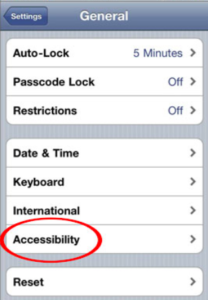
Inclusive Design
“The design of mainstream products and/or services that are accessible to, and usable by, as many people as reasonably possible…without the need for special adaptation or specialised design.”
The British Standards Institute, 2005
The principles of Inclusive Design aim to meet the needs of a diverse group of consumers across a wide array of contexts so that they have access to products readily available to the public (mass-produced). Buying products that are mass-produced is often cheaper than having to order, wait, and pay for specialized products.
 Examples of Inclusive Design:
Examples of Inclusive Design:
- Accessibility features included on computers and mobile devices
- Websites that allow for font size variation or inverted colors
- “Easy turn” medication bottles
- Toddler spoons with handles that are thick and made of non-slip material
Some websites about Inclusive Design:


